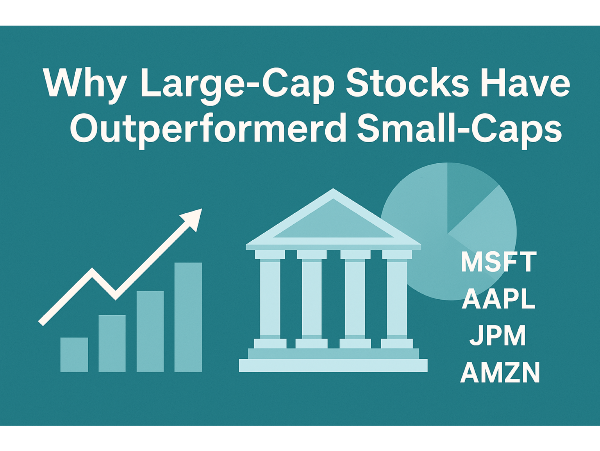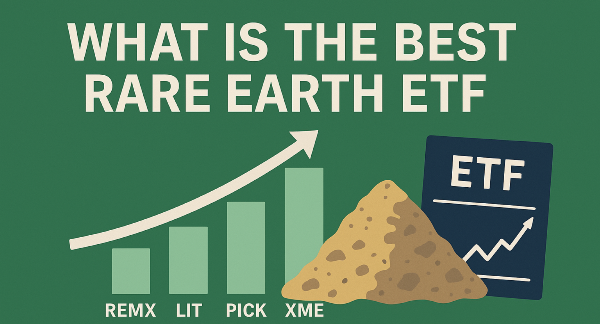Introduction
Large-cap stocks represent companies with market capitalizations exceeding $10 billion, often serving as industry leaders with strong financial stability. These stocks play a crucial role in financial markets, attracting institutional and retail investors due to their lower volatility and consistent returns. Historically, large-cap stocks have demonstrated resilience during economic downturns, outperforming small-cap stocks in periods of uncertainty. While small-cap stocks offer higher growth potential, large-cap stocks provide long-term security, making them a preferred choice for conservative investors seeking steady portfolio performance.
Key Factors Driving Large-Cap Outperformance
Large-cap stocks have demonstrated resilience during economic uncertainty, making them a preferred choice for investors seeking stability. Companies such as Microsoft and Apple maintain strong balance sheets, allowing them to navigate market downturns effectively. Their diversified revenue streams and global operations provide financial security, reducing volatility compared to smaller companies. Large-cap stocks also benefit from consistent dividend payments.
Hedge funds, pension funds, and mutual funds allocate significant capital to companies such as JPMorgan Chase and Bank of America, ensuring liquidity and market stability. Large-cap stocks are widely traded, offering lower bid-ask spreads and higher transaction efficiency. Sector dominance, particularly in technology and finance, has contributed to large-cap stock outperformance. Companies such as Nvidia and Alphabet lead innovation in artificial intelligence and cloud computing, reinforcing their market positions. Financial institutions like Goldman Sachs continue to shape global investment strategies, benefiting from economic trends and policy shifts.
Sources
Fairmont Equities
Nasdaq
CFA Institute
Impact of Interest Rates and Inflation on Large-Cap Stocks
Rising interest rates have a significant impact on large-cap stock performance, often favoring companies with strong balance sheets and stable revenue streams. Firms such as Microsoft and Apple tend to weather rate hikes better than small-cap stocks, which rely more on external financing. Higher borrowing costs can limit expansion opportunities for smaller firms, while large-cap companies maintain financial flexibility.
Inflation trends also influence large-cap stock valuations, affecting consumer spending and corporate profitability. Companies such as JPMorgan Chase and Bank of America adjust their strategies based on inflationary pressures, benefiting from higher interest income in rising rate environments. Meanwhile, consumer-focused firms like Procter & Gamble navigate inflation by adjusting pricing strategies to maintain profit margins. Investors monitor inflation trends closely, as prolonged inflation can impact earnings growth and stock valuations across sectors.
Sources
CFA Institute
Investopedia
University of Texas Research
Why Have Large Caps Outperformed Small Caps?
Large-cap stocks have consistently outperformed small-cap stocks due to their financial stability, institutional investment, and sector dominance. Companies such as Microsoft and Apple benefit from diversified revenue streams and strong balance sheets, allowing them to navigate economic downturns more effectively than smaller firms. Historically, large-cap stocks have shown resilience during periods of market volatility, attracting investors seeking lower risk and steady returns. Their inclusion in major indices like the S&P 500 reinforces their market leadership, making them a preferred choice for long-term investment strategies.
Market cycles play a crucial role in large-cap stock dominance, with historical trends favoring their performance during economic expansions. Financial institutions such as JPMorgan Chase and Bank of America have maintained strong positions due to their ability to adapt to interest rate changes and inflationary pressures. Meanwhile, technology leaders like Amazon and Alphabet continue to drive innovation, reinforcing their market influence. Investors monitoring these trends recognize the advantages of large-cap stocks in portfolio diversification and long-term financial planning.
Sources
CME Group
CFA Institute
Fairmont Equities
Investor Sentiment and Large-Cap Stock Preferences
Institutional investors continue to favor large-cap stocks due to their stability, liquidity, and strong financial performance. Companies such as Microsoft and Apple attract significant institutional capital, reinforcing their market dominance. Hedge funds and pension funds allocate substantial resources to large-cap stocks, ensuring steady demand and price support. Financial institutions like JPMorgan Chase and Bank of America benefit from institutional strategies that prioritize risk management and long-term growth.
Retail investors are also shifting their portfolios toward large-cap stocks, seeking security amid market volatility. Companies such as Amazon and Alphabet remain popular choices due to their consistent earnings and industry leadership. Many retail investors prefer dividend-paying stocks like Procter & Gamble, which provide passive income and portfolio stability. The trend toward large-cap investments reflects a broader preference for financial security and predictable returns. Healthcare firms such as Johnson & Johnson and Pfizer remain attractive for defensive investment strategies.
Sources
Transamerica
Charles Schwab
Harvard Research
Challenges and Risks in Large-Cap Stock Performance
Large-cap stocks face challenges related to market concentration, as a few dominant companies significantly influence overall index performance. Firms such as Microsoft and Apple hold substantial weight in indices like the S&P 500, making market movements highly dependent on their performance. This concentration risk can lead to volatility, as downturns in these major stocks impact broader market trends.
. Financial institutions such as JPMorgan Chase and Bank of America are particularly sensitive to interest rate changes and inflation trends, which can affect profitability. Additionally, technology leaders like Amazon and Alphabet face regulatory scrutiny and evolving consumer preferences, impacting their long-term growth potential.
Sources
StockBossUp
BBH
Investopedia
Future Outlook for Large-Cap Stocks
Large-cap stocks are expected to maintain steady growth, with predictions indicating continued outperformance in key sectors such as technology and finance. Companies such as Microsoft and Apple are leveraging artificial intelligence and cloud computing to drive innovation, reinforcing their market leadership. Financial institutions like JPMorgan Chase and Bank of America are adapting to evolving economic conditions, ensuring stability amid interest rate fluctuations. While large-cap stocks remain a reliable investment choice, analysts suggest monitoring macroeconomic trends to assess potential market corrections.
Emerging opportunities in large-cap investments are driven by advancements in technology, healthcare, and sustainable energy. Companies such as Amazon and Alphabet are expanding their AI capabilities, reinforcing their long-term growth potential. Meanwhile, healthcare firms like Johnson & Johnson and Pfizer are focusing on biotechnology and personalized medicine, ensuring continued innovation. However, risks such as market concentration and geopolitical instability could impact large-cap stock valuations, requiring investors to maintain diversified portfolios.
Sources
Schwab
American Century
Conclusion
Large-cap stocks continue to lead financial markets, driven by stability, institutional investment, and sector dominance in industries such as technology and finance. Their consistent outperformance over small-cap stocks highlights their resilience during economic shifts and interest rate fluctuations. While large-cap stocks offer security, diversification remains essential to mitigate risks related to market concentration and potential downturns. Looking ahead, advancements in artificial intelligence, healthcare innovation, and fintech solutions will shape the future of large-cap investments. Understanding these trends enables investors to build strategic portfolios aligned with long-term financial goals.
The Top Large Cap Stocks- https://stockbossup.com/pages/topics/large-cap
When Should I Invest in a Large-Cap?-https://stockbossup.com/pages/post/38637/when-should-i-invest-in-a-large-cap
What is the Large-Cap Strategy?-https://stockbossup.com/pages/post/38639/what-is-the-large-cap-strategy
Which Large-Cap Fund Gives the Highest Return?-https://stockbossup.com/pages/post/38648/which-large-cap-fund-gives-the-highest-return




























Introduction
Large-cap stocks represent companies with market capitalizations exceeding $10 billion, often serving as industry leaders with strong financial stability. These stocks play a crucial role in financial markets, attracting institutional and retail investors due to their lower volatility and consistent returns. Historically, large-cap stocks have demonstrated resilience during economic downturns, outperforming small-cap stocks in periods of uncertainty. While small-cap stocks offer higher growth potential, large-cap stocks provide long-term security, making them a preferred choice for conservative investors seeking steady portfolio performance.
Key Factors Driving Large-Cap Outperformance
Large-cap stocks have demonstrated resilience during economic uncertainty, making them a preferred choice for investors seeking stability. Companies such as Microsoft and Apple maintain strong balance sheets, allowing them to navigate market downturns effectively. Their diversified revenue streams and global operations provide financial security, reducing volatility compared to smaller companies. Large-cap stocks also benefit from consistent dividend payments.
Hedge funds, pension funds, and mutual funds allocate significant capital to companies such as JPMorgan Chase and Bank of America, ensuring liquidity and market stability. Large-cap stocks are widely traded, offering lower bid-ask spreads and higher transaction efficiency. Sector dominance, particularly in technology and finance, has contributed to large-cap stock outperformance. Companies such as Nvidia and Alphabet lead innovation in artificial intelligence and cloud computing, reinforcing their market positions. Financial institutions like Goldman Sachs continue to shape global investment strategies, benefiting from economic trends and policy shifts.
Sources
Fairmont Equities
Nasdaq
CFA Institute
Impact of Interest Rates and Inflation on Large-Cap Stocks
Rising interest rates have a significant impact on large-cap stock performance, often favoring companies with strong balance sheets and stable revenue streams. Firms such as Microsoft and Apple tend to weather rate hikes better than small-cap stocks, which rely more on external financing. Higher borrowing costs can limit expansion opportunities for smaller firms, while large-cap companies maintain financial flexibility.
Inflation trends also influence large-cap stock valuations, affecting consumer spending and corporate profitability. Companies such as JPMorgan Chase and Bank of America adjust their strategies based on inflationary pressures, benefiting from higher interest income in rising rate environments. Meanwhile, consumer-focused firms like Procter & Gamble navigate inflation by adjusting pricing strategies to maintain profit margins. Investors monitor inflation trends closely, as prolonged inflation can impact earnings growth and stock valuations across sectors.
Sources
CFA Institute
Investopedia
University of Texas Research
Why Have Large Caps Outperformed Small Caps?
Large-cap stocks have consistently outperformed small-cap stocks due to their financial stability, institutional investment, and sector dominance. Companies such as Microsoft and Apple benefit from diversified revenue streams and strong balance sheets, allowing them to navigate economic downturns more effectively than smaller firms. Historically, large-cap stocks have shown resilience during periods of market volatility, attracting investors seeking lower risk and steady returns. Their inclusion in major indices like the S&P 500 reinforces their market leadership, making them a preferred choice for long-term investment strategies.
Market cycles play a crucial role in large-cap stock dominance, with historical trends favoring their performance during economic expansions. Financial institutions such as JPMorgan Chase and Bank of America have maintained strong positions due to their ability to adapt to interest rate changes and inflationary pressures. Meanwhile, technology leaders like Amazon and Alphabet continue to drive innovation, reinforcing their market influence. Investors monitoring these trends recognize the advantages of large-cap stocks in portfolio diversification and long-term financial planning.
Sources
CME Group
CFA Institute
Fairmont Equities
Investor Sentiment and Large-Cap Stock Preferences
Institutional investors continue to favor large-cap stocks due to their stability, liquidity, and strong financial performance. Companies such as Microsoft and Apple attract significant institutional capital, reinforcing their market dominance. Hedge funds and pension funds allocate substantial resources to large-cap stocks, ensuring steady demand and price support. Financial institutions like JPMorgan Chase and Bank of America benefit from institutional strategies that prioritize risk management and long-term growth.
Retail investors are also shifting their portfolios toward large-cap stocks, seeking security amid market volatility. Companies such as Amazon and Alphabet remain popular choices due to their consistent earnings and industry leadership. Many retail investors prefer dividend-paying stocks like Procter & Gamble, which provide passive income and portfolio stability. The trend toward large-cap investments reflects a broader preference for financial security and predictable returns. Healthcare firms such as Johnson & Johnson and Pfizer remain attractive for defensive investment strategies.
Sources
Transamerica
Charles Schwab
Harvard Research
Challenges and Risks in Large-Cap Stock Performance
Large-cap stocks face challenges related to market concentration, as a few dominant companies significantly influence overall index performance. Firms such as Microsoft and Apple hold substantial weight in indices like the S&P 500, making market movements highly dependent on their performance. This concentration risk can lead to volatility, as downturns in these major stocks impact broader market trends.
. Financial institutions such as JPMorgan Chase and Bank of America are particularly sensitive to interest rate changes and inflation trends, which can affect profitability. Additionally, technology leaders like Amazon and Alphabet face regulatory scrutiny and evolving consumer preferences, impacting their long-term growth potential.
Sources
StockBossUp
BBH
Investopedia
Future Outlook for Large-Cap Stocks
Large-cap stocks are expected to maintain steady growth, with predictions indicating continued outperformance in key sectors such as technology and finance. Companies such as Microsoft and Apple are leveraging artificial intelligence and cloud computing to drive innovation, reinforcing their market leadership. Financial institutions like JPMorgan Chase and Bank of America are adapting to evolving economic conditions, ensuring stability amid interest rate fluctuations. While large-cap stocks remain a reliable investment choice, analysts suggest monitoring macroeconomic trends to assess potential market corrections.
Emerging opportunities in large-cap investments are driven by advancements in technology, healthcare, and sustainable energy. Companies such as Amazon and Alphabet are expanding their AI capabilities, reinforcing their long-term growth potential. Meanwhile, healthcare firms like Johnson & Johnson and Pfizer are focusing on biotechnology and personalized medicine, ensuring continued innovation. However, risks such as market concentration and geopolitical instability could impact large-cap stock valuations, requiring investors to maintain diversified portfolios.
Sources
Schwab
American Century
Conclusion
Large-cap stocks continue to lead financial markets, driven by stability, institutional investment, and sector dominance in industries such as technology and finance. Their consistent outperformance over small-cap stocks highlights their resilience during economic shifts and interest rate fluctuations. While large-cap stocks offer security, diversification remains essential to mitigate risks related to market concentration and potential downturns. Looking ahead, advancements in artificial intelligence, healthcare innovation, and fintech solutions will shape the future of large-cap investments. Understanding these trends enables investors to build strategic portfolios aligned with long-term financial goals.
The Top Large Cap Stocks- https://stockbossup.com/pages/topics/large-cap
When Should I Invest in a Large-Cap?-https://stockbossup.com/pages/post/38637/when-should-i-invest-in-a-large-cap
What is the Large-Cap Strategy?-https://stockbossup.com/pages/post/38639/what-is-the-large-cap-strategy
Which Large-Cap Fund Gives the Highest Return?-https://stockbossup.com/pages/post/38648/which-large-cap-fund-gives-the-highest-return